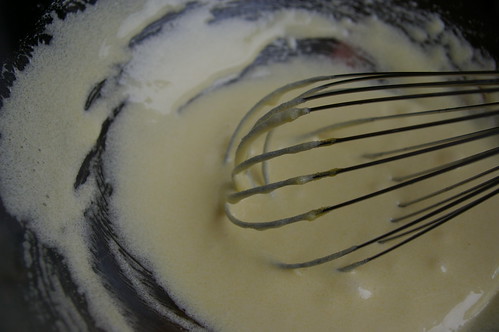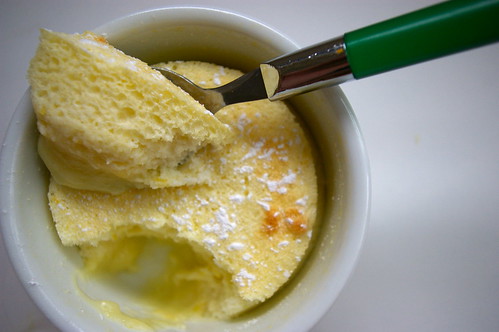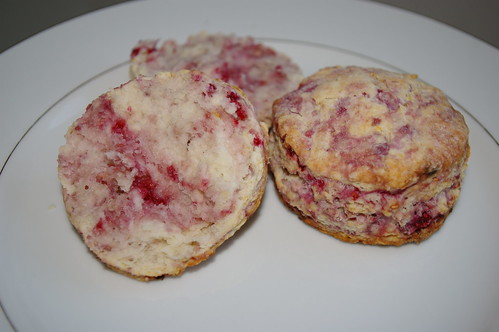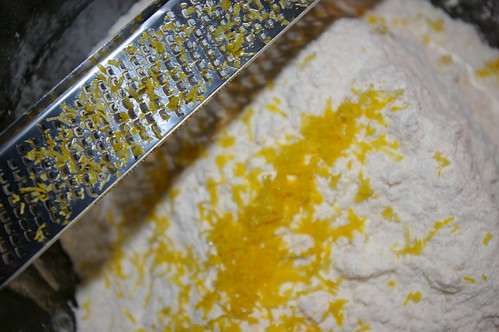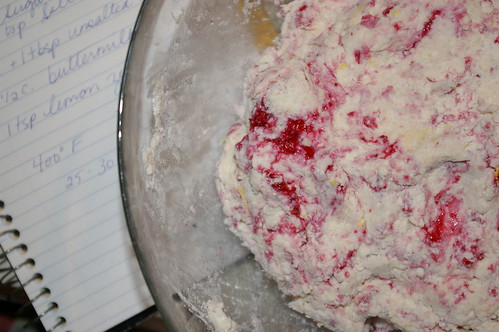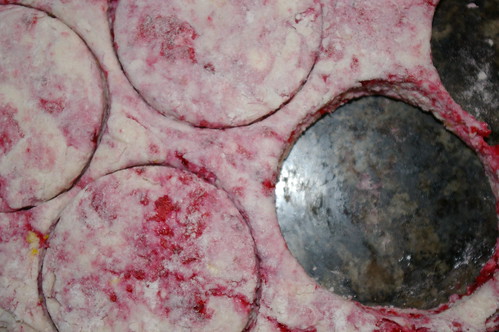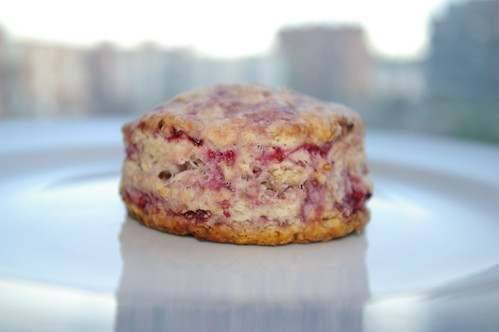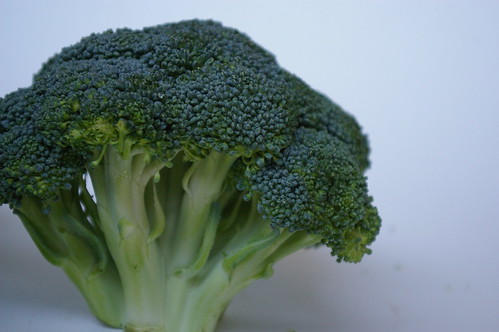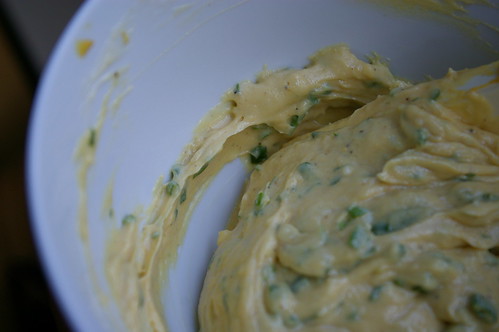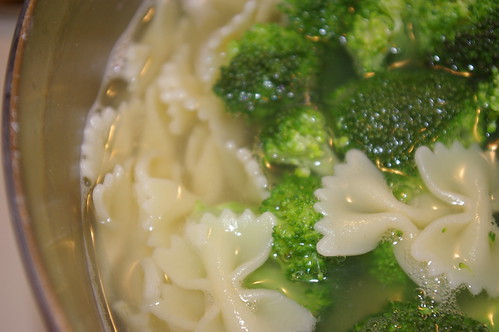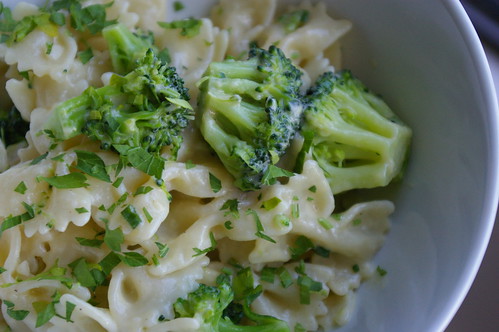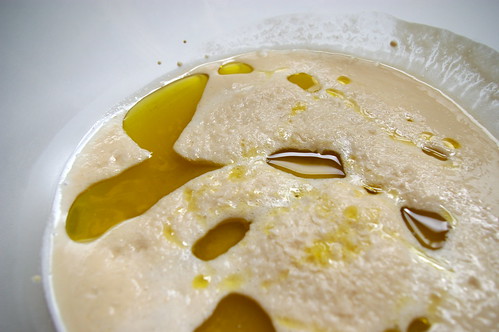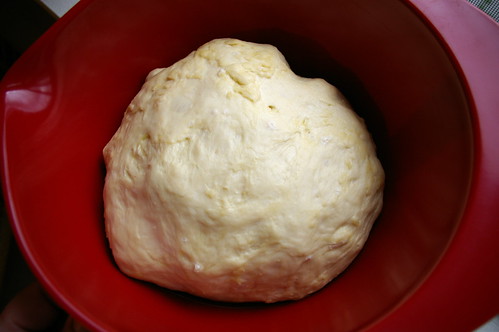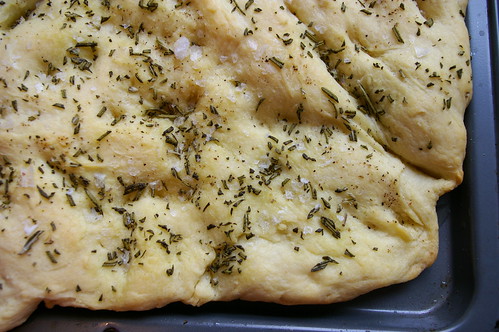I once “smiled” at a guy on an Internet dating website simply because in his write-up he noted he liked lemon-flavoured desserts and despite the fact he was far out of my romantic league (not to mention geographic).
That citrus kiss of lemon almost makes me swoon sometimes. The pucker, the tang, the play of sweet and sour.
I first made these Lemon Custard Cakes on Valentine’s Day for three girlfriends in a sort of lonely hearts’ dinner. Though, truth be told, only two of us were single at the time. Really it was a way of ensuring I wasn’t alone that night and, yes, the friends — not to mention the two (or was it three?) bottles of wine — and these little lemony babies made it a night to remember.
And I have thought about them many a time since then.
Last week I thought it was time to pull that recipe back out and enjoy these cakes again. But as I prematurely began salivating over thoughts of the light lemon cake that forms over the creamy lemon pudding at the base, I realized two things. 1) My milk was not really milk anymore. (Yikes!) and 2) I was out of all-purpose flour. (How did that happen?) Dreams dashed, I put the book away again.
But, a quick stop at the grocery store on the way home from work tonight and I was good to go.
And it was all going very well until it came time to squeeze the lemon and I realized that this might be tricky considering the ginormous paper cut I subjected myself to yesterday (while on the phone no less, which left me trying to deal with the wound, while typing, while pretending to the person on the phone that nothing was happening. No small feat.) And yes, lemon juice got in it. And, yes, it hurt. But it also reminded me of this exchange from The Princess Bride:
Inigo Montoya: Are you the Miracle Max who worked for the king all those years?
Miracle Max: The king’s stinking son fired me, and thank you so much for bringing up such a painful subject. While you’re at it, why don’t you give me a nice paper cut and pour lemon juice on it?
These Lemon Custard Cakes are a strange piece of alchemy. A thin, watery batter goes into the oven and a cake-topped custard comes out. I was so pleasantly surprised the first time I made them. The unctuous custard, the hint of lemon, a powdering of icing sugar, what wasn’t to like?
The first time I followed the recipe exactly, right down to the fact that you cook them in a water bath sitting on a kitchen towel. It was only this time that I saw the explanation why:
Baking the desserts in a hot-water bath keeps them creamy and custardy beneath their golden cakey tops. Linking the roasting pan with a dish towel helps water circulate under the cups for even cooking.
Who am I to question that?
Of course, my version looks nothing like the picture in the cookbook, but I think that’s because I’m using larger ramekins and filling them up a bit more than is probably recommended.
This recipe comes from Everyday Food — an offshoot of Martha Stewart Living. (Yet another cookbook impulse buy but with some very impressive and consistently delicious and easy recipes.) My notes are in italics.
Lemon Custard Cakes
- Unsalted butter, at room temperature, for custard cups
- 3 large eggs, separated
- 1/2 cup granulated sugar
- 2 tbsp. all-purpose flour
- 2 to 3 tbsp. grated lemon zest (from one lemon)
- 1/4 cup fresh lemon juice
- 1 cup milk
- 1/4 tsp. salt
- Icing sugar for dusting
Preheat the oven to 350. Set a kettle of water to boil. Butter six 6-ounce custard cups, and place them in a roasting pan or baking dish lined with a kitchen towel.
In a large bowl, whisk together the egg yolks and granulated sugar until the mixture is light; whisk in the flour. Gradually whisk in the lemon zest and juice, then whisk in the milk.
With an electric mixer, beat the egg whites and salt until soft peaks form. Add to the lemon mixture; gently fold in with a whisk (the batter will be thin).
Divide the batter among the prepared cups. Place the pan in the oven, and fill with boiling water to reach halfway up the sides of the cups. Bake until the puddings are puffed and lightly browned, 20 to 25 minutes. (Note: Because I used larger ramekins, mine took a bit longer but only one or two minutes, so I suggest checking at the 20-minute mark.) Serve warm or at room temperature, dusting with icing sugar.
Note: If you do not have individual custard cups, bake the batter in an 8-inch square baking dish (or other shallow 2-quart baking dish) for 30 to 35 minutes. (I bet this would be great too and will consider trying that next time.)


